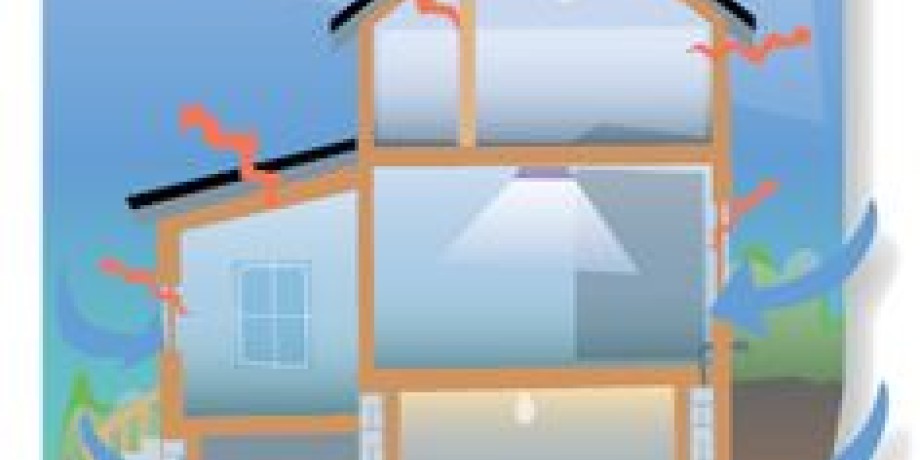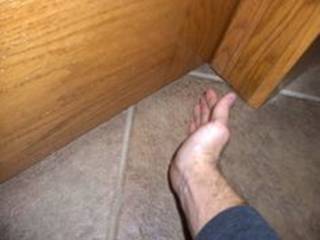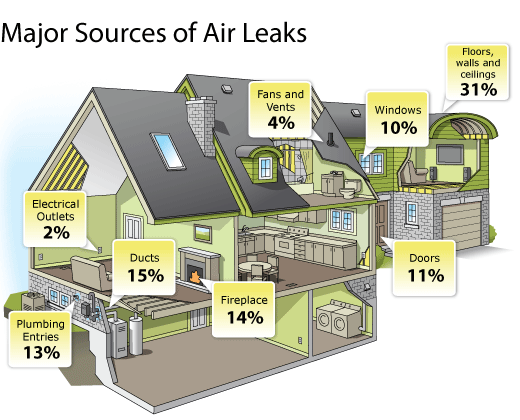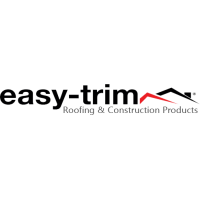Airtightness - A Contribution to Energy Efficiency


Making your Home Draught-Proof
One significant contribution to energy efficiency is airtightness. Namely, even though you are having a well insulated home, this still does not mean that you will not have to battle poor energy efficiency, since there are also other factors that can and will influence the energy performance of your household. Potential air leaks are among these factors and can influence and decrease the thermal performance of your home by simply increasing the level of thermal conductivity and thus U values of a specific structure such as an insulated wall. Although insulation is and should be a vital part of any building construction since it has more to it than just improved energy efficiency, it still does not mean that insulation itself does not require adequate protection from air leaks caused by existing gaps in the insulation material and the surrounding structure.
You should know that air leaks are a very common occurrence, usually appearing due to uncontrolled air exchange between the interior and the exterior, through both air infiltration and exfiltration, and most commonly caused by wind and stack effect. Namely, the air outside circling around the building envelope will cause certain pressure differences at the windward and leeward side of the building. Thus, the air will escape out at the side of negative pressure while the outside air will get in at the positive pressure side of the building, thus causing air exchange between the interior and the exterior thus causing temperature drops inside, since interior temperatures are typically higher than exterior ones. On the other hand, when the air gets heated within the building envelope, it travels up and thus raising the level of air pressure and causing exfiltration, when the colder air enters the building through existing cracks and gaps in the structure. Please note that the level of air leakage will depend on the differences between the interior and exterior temperatures, the strength and direction of the wind and the level of airtightness of the entire structure.
However, it is important to differ uncontrolled air leakage from proper ventilation. Namely, ventilation is necessary within any closed space since it affects respiration, allows potential pollutants to leave the interior space and influences condensation and humidity levels within the building. It is ensured by both uncontrolled air filtration (caused by unintentional air exchange) and by different controlled mechanical and natural means of air filtration. Although airtightness is important, it should never be insisted on the account of ensuring proper ventilation, why the key is finding the right balance by increasing the level of controlled and decreasing the level of uncontrolled air filtration.

What Causes Air Leakage?
In order of dealing with air leakage within your home and improving the airtightness and energy efficiency, you need to know which are the factors that can influence the level of air filtration. Some of the most influential factors include:
- type of construction and the age of the building. Namely, varying from one country to another, newer dwellings tend to be more airtight than older ones, just as some types of constructions such as concrete or masonry are typically more airtight than for example steel or timber constructions. Another important note is that air leakage tends to increase over time, probably due to changes to the building fabric or wear-of construction materials.
- the location of the primary air barrier is among the most important factors that influence the airtgihtness of the entire construction. The reason is that usually the primary air barrier is not included nor addressed in the design plans, why it is usually formed spontaneously by some typical elements such as drylining or cavities, which can all be a great source of air leakage.
- seasonal influences are also important, since studies have shown that the level of air leakage is greater during winter than during summer.
- quality of the construction, which most certainly includes the level of insulation installed, which can drastically influence the airtightness and energy efficiency of any household.
How to Deal with Air Leakage?
Before moving on to dealing with air leaks and improving the airtightness, you need to know hot to identify the most common problems. Air leaks most commonly occur as direct or indirect, whereas gaps around doors and windows, at thresholds, around loft hatches are an example of direct air leakage while leaking points at wall junctions, around staircases, service voids are an example of indirect air leaks.

Most commonly used air leakage identification methods include smoke detection where smoke puffers are used, thermal imaging which can show the most vulnerable points if used properly or the combination of both.
You can improve the airtightness of your household firstly at the design stage. It is important to include the primary air barrier into the original plans, in order of ensuring its continuity through the building structure. This may include minimizing the number of service penetrations, taking into consideration all junctions and changes of the material throughout the envelope, minimizing gaps and cracks and ensuring air barrier robustness. Additional advice on the matter include applying proper construction techniques at every stage, proper on-site and quality control by immanent supervision and constant monitoring and proper communication between everyone included in the construction process, from the designer and planner to the developers and construction workers.
Make your home airtight and stop wasting energy, order insulation products at discounted prices at Insulation Shop.



































































































































